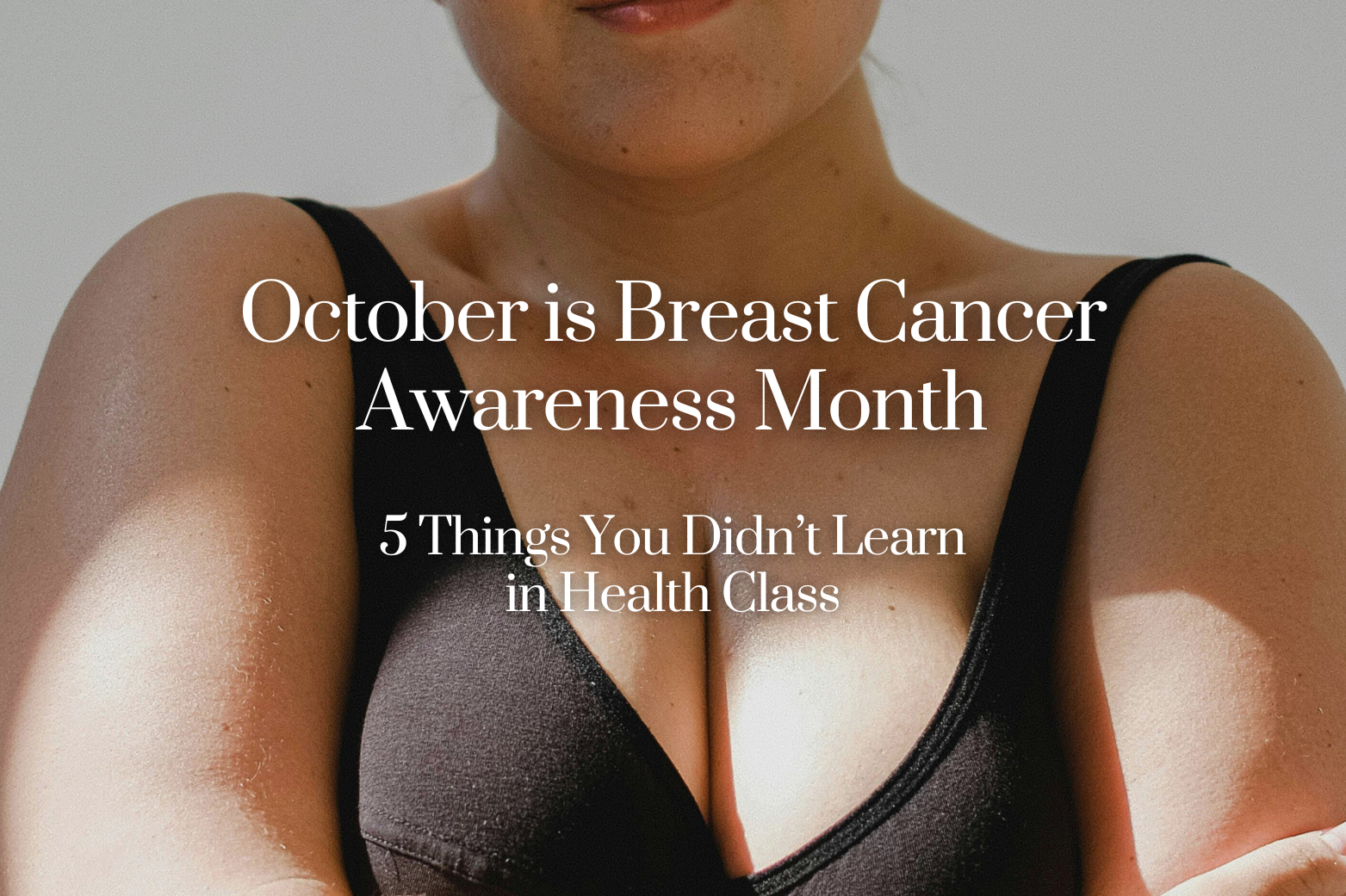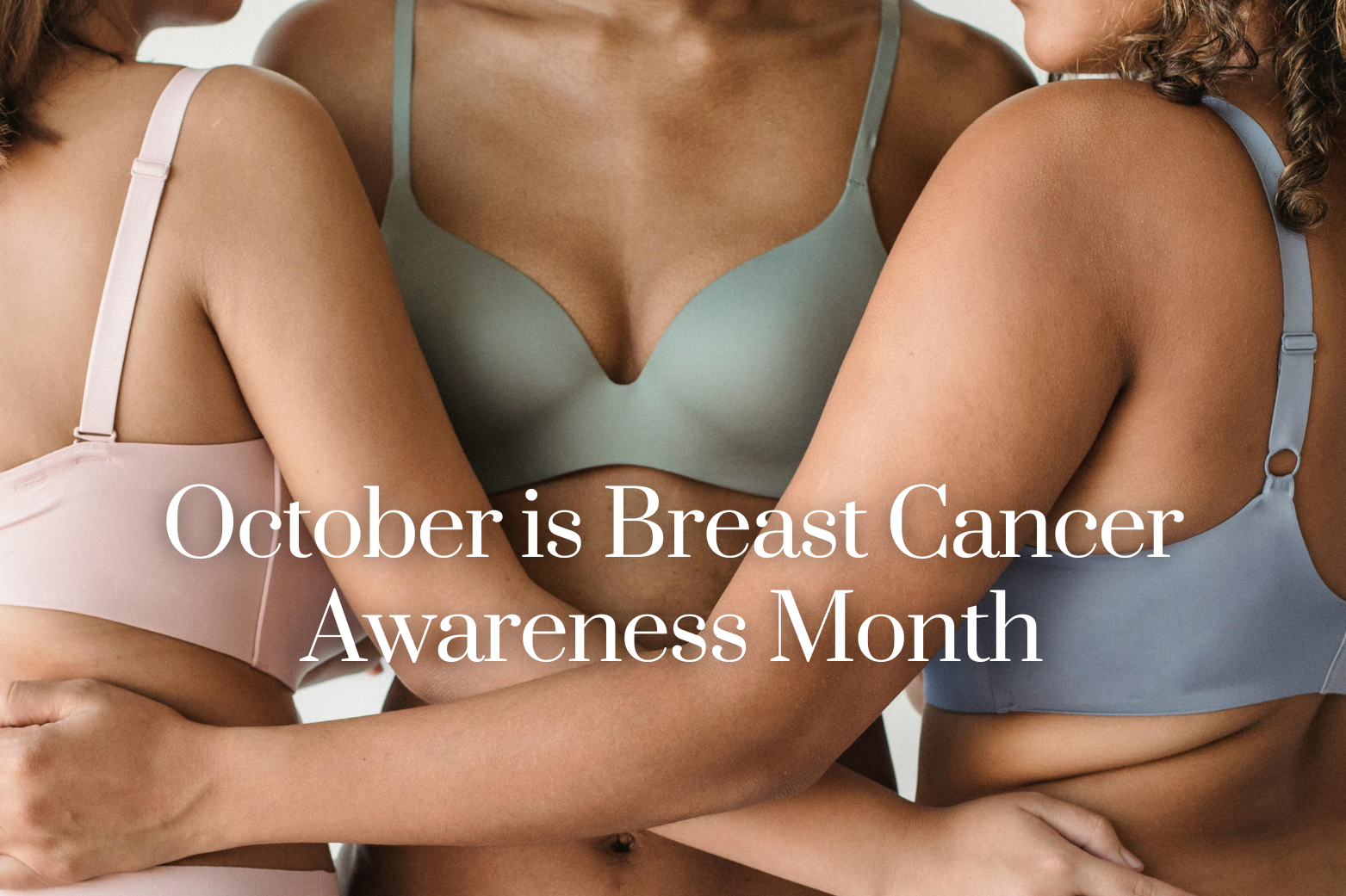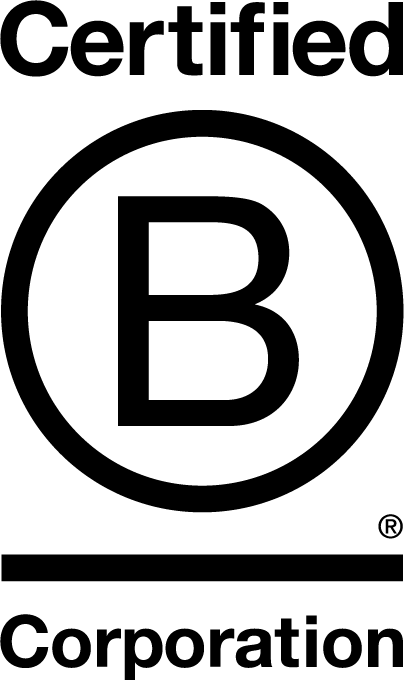Life of Riley Blog

Life of Riley Blog
October is Breast Cancer Awareness Month: Know Your Normal, Protect Your Health 🎀
by Anne Woetzel on Oct 28 2025
If you’re like most women, you probably weren’t taught much about breast health growing up. Beyond puberty, conversations about how our breasts change - and what’s normal - are often left out of health education.
This October, for Breast Cancer Awareness Month, we’re breaking that silence. We’ll explore how breast tissue evolves through different life stages, why “knowing your normal” is key to early detection, and how regular awareness can empower you to take charge of your health.
Why Early Detection Matters
Breast cancer is the second most common cancer worldwide, affecting millions each year. According to the World Health Organisation, over 2 million new cases are diagnosed annually, and 670,000 lives were lost to breast cancer in 2022.
But here’s the hopeful truth: when detected early, breast cancer is highly treatable.Early detection starts with awareness - understanding how your breasts normally look and feel so you can recognise when something changes.
Know your Normal: What you didn’t learn in Health Class
Your breast health journey is uniquely yours. Understanding how your body changes with time, hormones, and life events helps you stay proactive and confident.
Here are five important things about breast health that probably didn’t make it into your health textbook, but can make all the difference in knowing your normal and protecting your health.
1. Your Breast Tissue Is Unique - and That’s Normal
No two breasts are the same (not even your own!). Asymmetry, stretch marks, size differences, and varied nipple appearances are all completely normal. The first step in breast health awareness is knowing what’s normal for you.
2. Breasts Change Throughout the Menstrual Cycle
Hormones play a big role in breast changes. It’s common for your breasts to feel sensitive, swollen, or achy before your period. They might even feel bigger in size or heavier during menstruation due to hormonal shifts - that’s normal, too.
Tracking your cycle helps you spot patterns. If you notice something new that doesn’t align with your usual rhythm, bring it up with your doctor. Paying attention to changes at the same point in your cycle helps you identify what’s normal for you.
3.
Hormonal Shifts from Birth Control, Pregnancy, and Breastfeeding Can Reshape Breast Tissue
Breast tissue naturally responds to hormones. During pregnancy and breastfeeding, your milk ducts expand, glandular tissue grows, and your breasts may feel denser or more tender. You might notice darkened areolas or visible veins - all normal postpartum changes.
Birth control and hormone therapy can also affect breast texture or size, especially when starting or stopping them. So check in with your body after major hormonal or life changes - and get reacquainted with what your normal looks like.
4.
Breast Tissue Changes with Age
Breast tissue begins developing in the womb and continues evolving throughout life. During puberty, oestrogen drives the growth of glandular tissue, ducts, and fat - which can cause tenderness or uneven development.
Younger women typically have denser breast tissue, which can make tumours harder to detect via mammogram, but this changes over time. As oestrogen levels drop during perimenopause and menopause, breasts usually become softer and less dense.
While breast cancer risk increases with age, the good news is that mammograms become easier to interpret and early detection remains highly effective.
5. Knowing Your Normal Is the Foundation of Early Detection
The most powerful tool you have is your awareness. Early detection isn’t just about mammograms - it’s about trusting your intuition and noticing when something changes.
Most breast changes aren’t cancer, but every change deserves attention. If something feels off, speak up. You know your body best. If something doesn’t feel right, trust your gut and talk to your doctor or GP.
Resources and Support
World Health Organisation
National Breast Cancer Research Institute, Ireland
Breast Cancer Ireland
Breast Cancer UK
NHS How to check your breasts
Cancer Research UK

Life of Riley Blog
How to Check Your Boobs: October is Breast Cancer Awareness Month 🎀
by Anne Woetzel on Oct 23 2025
Every October, the world turns pink to mark Breast Cancer Awareness Month - raising awareness, promoting early detection, and supporting those affected by breast cancer.
It’s more than a month on the calendar - it’s a reminder to take charge of your health and make self-care a priority.
According to the World Health Organisation (WHO), breast cancer is the second most common cancer worldwide, with more than 2.3 million new cases diagnosed each year. Sadly, in 2022, it claimed over 670,000 lives annually - but here’s the good news: when detected early, breast cancer is highly treatable.
That’s why awareness matters. And one of the most effective ways to protect yourself is simple - by getting to know your boobs.
Why Self-Checks Matter:
Self-checks aren’t about fear - they’re about empowerment. Understanding how your breasts normally look and feel helps you recognise when something changes.
You don’t need to wait for your annual screening to take action. By making self-checks a regular habit, you’re giving yourself the gift of early awareness, which can make a lifesaving difference.
Here's a Breakdown On How To Check Your Boobs:
It only takes a few minutes, and you can do it in the shower, in front of a mirror, or lying down - whatever feels most comfortable for you.Step 1: Get Comfortable
Place one hand behind your head. With the other, use the pads of your fingers to gently move in small, circular motions around your entire breast and chest area.
Make sure to check from your collarbone down to below your breast, and from the centre of your chest to your armpit.
Step 2: Use Different Pressures:
Use a combination of light, medium, and firm pressure as you move around each breast.
Light pressure: feels the tissue just beneath your skin.
Medium pressure: checks the middle tissue
Firm pressure: allows you to feel deep tissue near your chest wall
Don’t forget your armpit area - breast tissue extends there too! Step 3: Look in the Mirror:
Visual checks are just as important as feeling.Stand in front of a mirror with your arms at your sides, then lift them above your head.Look for any changes in shape, size, or colour, and notice if there’s swelling, dimpling, or skin puckering:
If you notice any of these, don’t panic - many are caused by benign (non-cancerous) conditions. But it’s always worth getting checked for peace of mind and prevention.
Step 4: Repeat Monthly
Try to check your boobs once a month, ideally at the same point in your menstrual cycle.If you no longer have periods, pick a consistent day each month (like the first) so it becomes routine.
Your breasts naturally change throughout your cycle due to hormones - so tracking them regularly helps you understand what’s normal for you.
Final Thoughts 💗
Checking your boobs isn’t just about finding something wrong - it’s about staying connected with your body and prioritising your health.
It’s a small act that carries a big message: You care about yourself, your future, and your wellbeing.
So this October - and every month - take five minutes to check your boobs.Because early detection is the best protection, and awareness is where it begins 🍒
Resources and Support
World Health Organisation
National Breast Cancer Research Institute, Ireland
Breast Cancer Ireland
Breast Cancer UK
NHS How to check your breasts
Cancer Research UK


